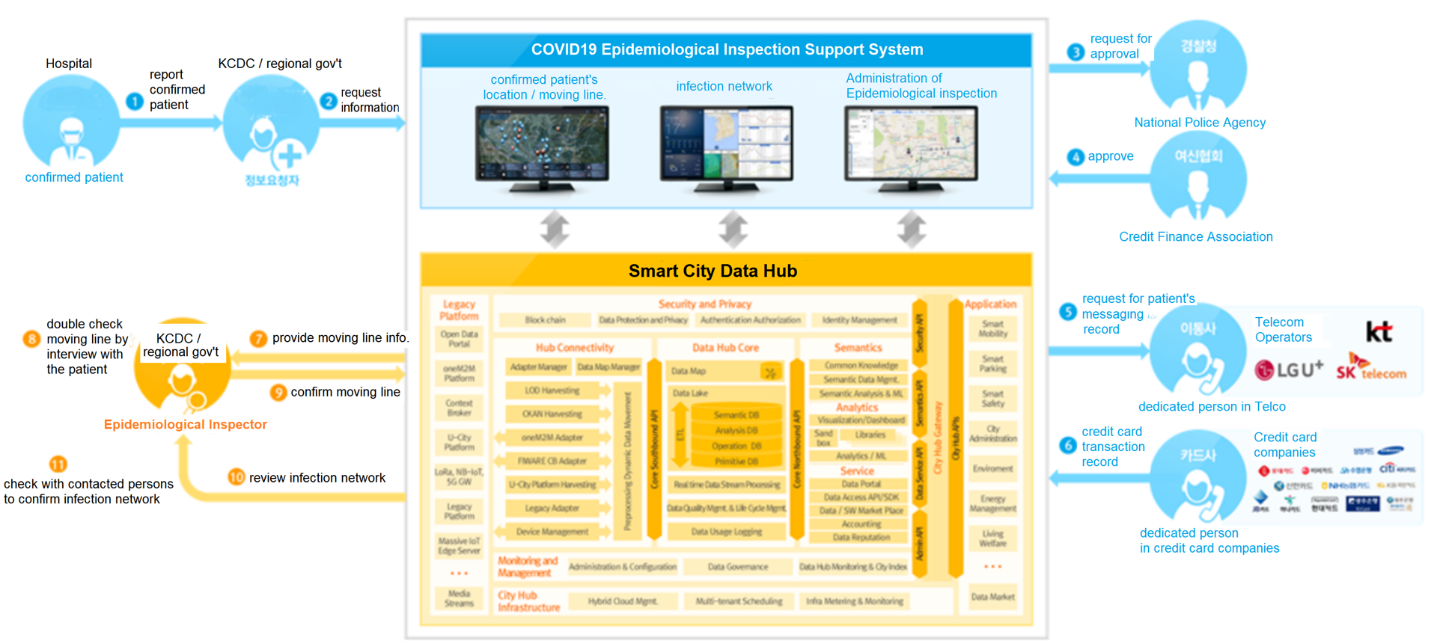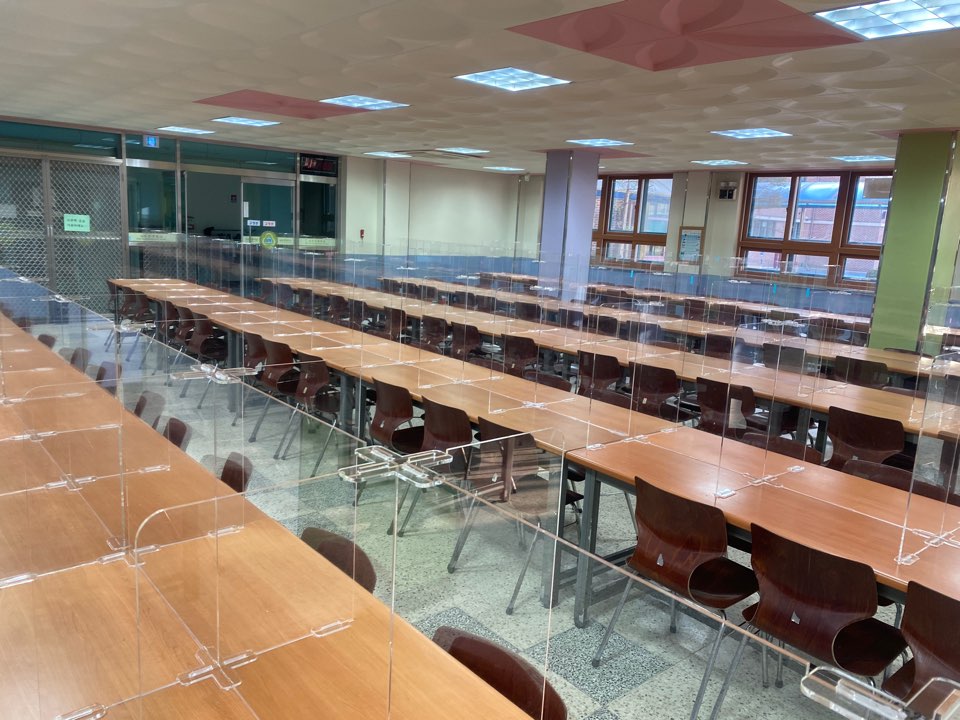Orange, an international company with a worldwide presence, can rely on experts in innovation in Asia. After a tour around Singapore to understand how technologies have been used to fight the spread of the coronavirus, I invite you to continue the journey with me to Korea. Danny Han, an expert in new technologies based in Seoul, will answer our questions and share his experience with COVID-19.
First and foremost, it is important to point out that the content of this interview is intended to show an example of good practices in dealing with the crisis we are all experiencing. The aim of this interview is to draw inspiration, not sell a model. Each country has its own culture and its own laws, and the example of Korea may not be transposable to Europe with its particularly strict legal framework on the use of personal data (GDPR).
Guillaume Baley: Hello Danny! First of all, I would like you to introduce us to Orange Fab Asia.
Danny Han: Orange Fab Seoul is a remote office of Orange Japan, operating a start-up acceleration program to bring innovation to our operating countries and a partnership opportunity study with local companies such as telcos and manufacturers as well as supporting delegations from HQs and French entities. Activities in Seoul were launched in 2004.
GB: Can you describe how things have been evolving around COVID-19 over the last few weeks in Korea? What is the current situation, and how do you see this situation evolving in the future?
DH: Since people in Korea have followed the guidelines given by the government, the number of new cases per day declined to around 10 in early May 2020.
Thus, the government decided to loosen social distancing practices to “everyday life quarantine” beginning 6th May, which allows people to do social and economic activities, while at the same time being responsible for stopping the virus from spreading by respecting these five guidelines:
- Maintain an arm’s length distance from others in public spaces
- Wash hands with soap and water for more than 30 seconds
- Use shirt sleeves to cover mouth when coughing
- Ventilate indoor spaces at least twice a day while sanitizing spaces regularly
- Workers are advised to stay home for 3-4 days when feeling sick
Schools reopened one by one beginning 13th May (K-12 grade students first) with strict guidelines, and our pro baseball league kicked off with only online audiences.
GB: In the context of a pandemic such as COVID-19, one of the first things to do is to identify affected and potentially contagious people as quickly as possible. What technologies are used in Korea to do this?
DH: At first, we used the interview method to find out confirmed patients’ location history and then alert those who had been contacted so they could monitor their health condition and self-quarantine.
If there were questions, investigation through phone call log analysis, location info and credit card payment records was used to ensure no important spots were missed. Even video recorded by CCTV (closed-circuit TV) cameras was analyzed.
Based on this investigation, the government immediately shared the location history (without personal information) with the public through official channels and by cell broadcasting alert so that residents could be cautious and not travel in the areas where patients had visited.
For more efficiency, the government developed the Epidemiological Investigation Support System, automating the epidemiological investigation process to shorten the time from one day to 10 minutes using smart city R&D technology to collect and process large-scale city data in a very short time.

GB: When people are in quarantine at home, are technologies used to confirm they are abiding with confinement rules?
DH: Installing the COVID-19 self-quarantine mobile application is enforced for those in self-quarantine.
- This enforcement tool effectively monitors the movement of self-quarantined persons
- Users must agree to the collection of their personal information and the use of GPS information
- Police services can be requested if an individual is detected leaving their designated quarantine location, or they can even be fined or imprisoned per the Infection Disease Control and Prevention Act
- The app also serves as a channel to report self-diagnosed symptoms and provides self-quarantine guidelines and the contact information of the government official in charge of monitoring


GB: Are there also technologies used to prevent contamination, other than masks and sanitizer?
DH: Students are not mandated to go to schools; they can stay at home while submitting self-study plans.
In cinemas, people are able to social distance by reserving seats using the reservation system.
School cafeterias will install transparent walls between seats, and students must wear masks during classes.
GB: From a European point of view, some measures and technologies may seem intrusive, and if misused, could be detrimental to the freedom of individuals. How do people perceive this in Korea?
DH: For everybody’s safety, we kind of understand, and people are being cautious because their privacy can be shared publicly once they became a part of this.
However, as it’s based on law, people have to follow what the government is asking, while being cautious if not doing what’s been asked. If they do it correctly, there is no issue with their privacy, and they can be sure that their personal information will be used appropriately and only for specific instances.
GB: Do you have an equivalent of GDPR in Korea?
DH: Our personal data protection law is quite strict. But for specific cases such as COVID-19, it can be overridden by the “Infectious Disease Prevention Method” based on the regulations that enable the authorities to use personal information for accurate epidemiological investigation in an infectious disease crisis situation. This system was prepared through the legislative revision of the National Assembly in accordance with the necessity for an accurate epidemiological investigation after the 2015 MERS (Middle East Respiratory Syndrome) incident and, in the exceptional case of preventing infectious diseases such as COVID-19, the related organizations' cooperation and approval procedures. Through this, personal information can be utilized, while minimizing the target of information acquisition. The acquisition procedure is strictly operated so that it can be managed safely, while utilizing personal information.
Only the confirmatory, etc. determined by the epidemiological inspector to require additional information, requests personal information of the relevant authorities, and additionally goes through the verification and approval procedures of the National Police Agency for location information.
GB: In such a context, government communication is strategic. What are the means used in Korea to inform the population? And with what responsiveness was the information shared?
DH: Korea’s domestic law, the Infectious Disease Control and Prevention Act, guarantees the public’s right to be informed of the latest updates regarding an infectious disease outbreak, infection prevention/control information and relevant responses and mandates the government to reveal the routes of confirmed cases, their transportation means, contacts, healthcare institutions visited, etc. As such, the government communicates caseload updates (number of confirmed cases, number of those in isolation, number of tests performed, routes of confirmed cases, etc.) and related policies through two regular briefings per day (by the Central Disaster and Safety Countermeasure Headquarters in the morning and by the Central Disease Control Headquarters in the afternoon) and frequently distributes press releases. The government also provides the latest information via the websites, SNS channels and portal sites of various government agencies.
The Cell Broadcasting System is used to alert residents of emergencies and new cases in an area and to warn them to be more cautious and leave the area.
For more information, you can visit: http://ncov.mohw.go.kr/en
GB: Last but not least, what sectors or innovations do you think will benefit from this crisis and develop over the next few years?
DH: The COVID-19 crisis will help us to review Korea’s strengths and weaknesses. The technologies and products we were lacking at the beginning of the crisis will be the areas of innovation we have to develop.
Considering all that, the Korean government has released the Korean version of a new plan focused on economic recovery, including:
- Strengthening data collection/sharing/trading/usage infrastructure
- Quickly deploying 5G infrastructure
- Developing 5G converged businesses
- Expanding AI data and infrastructure
- Expanding AI convergence to all industries
- Cultivating untapped industries
- Strengthening cloud and cybersecurity networks
- Digitizing old national infrastructures
- Building digital logistics service structures

I am a Senior Consultant at Orange Consulting in charge of web listening and business intelligence. My main mission is to help companies make information a strategic lever. My projects and my daily experience help me hone my skills in areas such as Data Governance, Artificial Intelligence, and Innovation via start-ups.